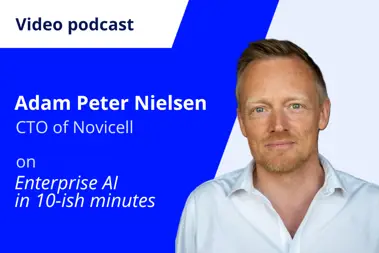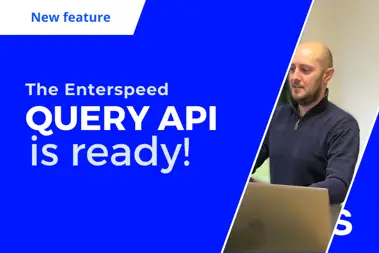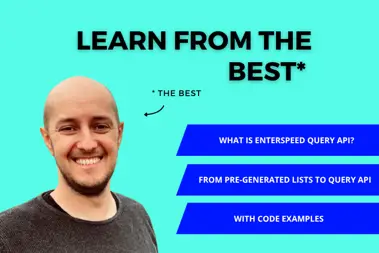Blog
Tips and strategies about performance

18/11/2025
Our Shopify destination is here!

Our Shopify integration is here! Sending products to Shopify just got a lot easier. We’re introducing the Enterspeed Shopify Destination in preview.

Introducing the Enterspeed Query API

Dynamic lists, native filtering, and faster builds – right inside Enterspeed. This is for anyone who’s worked with larger lists in Enterspeed. Because we see you 😉

Announcing the Enterspeed Shopify Destination

In early 2024, we officially launched Enterspeed Destinations, and now we can add the preview of our most advanced destination yet: the Shopify Destination.

Have you talked with your data recently?

From static dashboards to conversational intelligence: How to democratise your enterprise data with GenAI (safely)?

Should e-commerce fear agents? Short answer: only if you don’t govern them.

We’ve all seen the AI flood: languages, images, video. The real value, Adam Peter Nielsen, Novicell CTO, argues, lands when mature language and context models meet governed enterprise data.

Kentaur brings product, pricing, and content data into one seamless view

Through decoupling and content federation, Kentaur can now efficiently manage and orchestrate data delivery to various endpoints, including search indexes and websites.

11/09/2025
Enterspeed partners with JAKALA

Enterspeed has entered a strategic partnership with JAKALA, a European data, AI, and experiences company headquartered in Milan with offices worldwide.

One year later: Danish Crown’s web performance is steadily in the green

When Danish Crown built a brand-new tech infrastructure, the goal was a faster, more scalable frontend to support their ambitious content strategy and deliver a smooth user experience across markets.

Launching the Enterspeed Query API

Earlier this year, we launched a preview of our Query API. Since then, we’ve added new features and polished the existing ones. Today, we’re making the Query API available to every Enterspeed tenant.

Build better editor UX in composable CMSs with our Query API

Check out how we used the Query API to create a custom content picker for Umbraco, rebuilding the editor experience.

How to implement the Query API on your website

The best way to test a new feature is to USE IT. So we’ve tested the new Enterspeed Query API on our very own Enterspeed.com site. (And we still think it’s awesome!).

Getting ISO 27001 certified. Want to know how – and why it was worth it?

Back in December 2024, we decided it was time to get formal, recognised validation for the security measures we had already put in place.

02/07/2025
We’re now ISO 27001 certified🎉

Big news from team Enterspeed – we’ve officially earned our ISO 27001 certification! The compliance might not be new, but the certification is! And we’re so proud 😊


